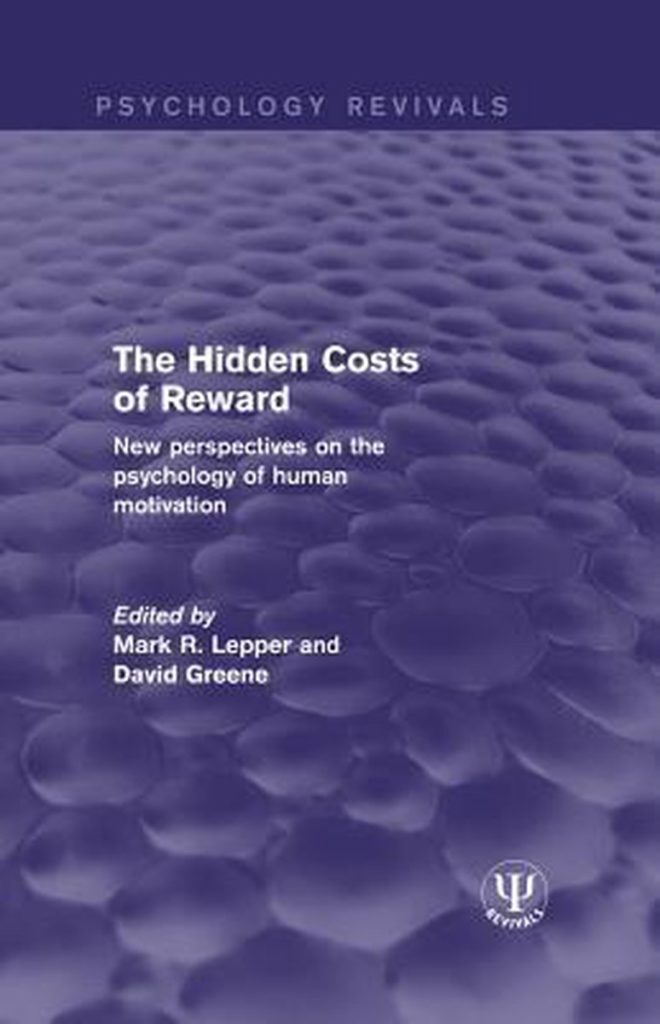When we consciously reward someone, especially children, we do so to reinforce a behavior or attitude, however, we often fall into what is called the hidden cost of the reward, that is, an involuntary and hidden cost with which the person’s intrinsic motivation in relation to the activity he performs is compromised.
We’ll set an example. This explains why people are more creative when they draw or write on their own (intrinsic motivation, MI) than when they do so for an economic reward or reward (extrinsic motivation, ME), that is, they are paradoxical cases, where external rewards decrease motivation.
- First.
- To explain the effect of the hidden cost of reward.
- It is necessary to make a clear distinction between the two types of motivation.
- Intrinsically motivated behaviors are those that we perform spontaneously.
- For pleasure or out of interest in their own execution.
- Are the ones we do without receiving anything in return.
- Without incentive or external control.
- So these activities are not only a means.
- But an end in itself.
On the other hand, extrinsic motivation comes from environmental incentives and consequences. It arises from a driving pact 😕 (behavior required) to obtain? (compensatory premium).
At first glance, behavior may seem intrinsic or extrinsic; however, the fundamental difference between the two lies in the source that motivates and directs behavior; in MI, comes from the spontaneous satisfaction of a psychological need, provided by the activity itself. At ME, this comes from external incentives and consequences.
People give rewards in the hope that the other will benefit from increasing their motivation and strengthening their behavior; however, in doing so, these extrinsic rewards interfere with the learning process and the development of autonomous self-regulation. This is one of the explanations, effects of the hidden cost of the reward.
Imagine that parents always reward their children with money for getting good grades. By repeating this behavior, the student will eventually memorize only to succeed. In other words, you won’t feel intrinsically motivated to gain a conceptual understanding of the content. I’ll only study to get something in return.
People are more creative when they feel more motivated, more by the interest, pleasure, satisfaction and challenge of the work itself, than by external pressures.
Basically, coercing or encouraging people to overuse, even using undeniably attractive rewards, such as money, brings a change in the importance of the reasons for carrying out this task, from reasons related to autonomy to those related to the environment (Deci et al. . . , 1999).
Expected rewards weaken intrinsic motivation, unlike unexpected rewards; However, depending on the nature of these reinforcements, the hidden cost of the reward may be more or less pronounced.
Tangible rewards (money, prizes, trophies) are used to exercise some kind of control over behavior. They are often used in different contexts (family, educational, professional) to encourage people to do something they wouldn’t otherwise do.
However, according to several studies, tangible unexpected rewards and non-task-related rewards have no negative effect on IM, decrease or increase it. Note that these are the ones the person receives regardless of how they have done the work, on the other hand, the rewards consistent with the participation, completion and execution of this activity decrease the IM.
There are times when extrinsic motivation also works and therefore the hidden cost of the reward is not generated, i. e. there are exceptions where external incentives, consequences and rewards are beneficial, we refer more specifically to activities that do not have in themselves. a great intrinsic attraction.
Some of them are: participating in recycling tasks, saving energy, driving according to traffic rules or increasing the participation of older people in physical activities, in all these activities it is productive to reward good behavior, because if not, that behavior would not be achieved effectively.
The hidden cost of extrinsic reward on intrinsic motivation is limited to activities in which there is already interest.
As you can see, there are always two ways to enjoy an activity: if we play a musical instrument to have fun and develop valuable skills, we do it intrinsically; if we play the instrument because it’s a chance to win money, prizes and trophies or to impress others, it will be extrinsic. How do you identify with the first, second, or both?

